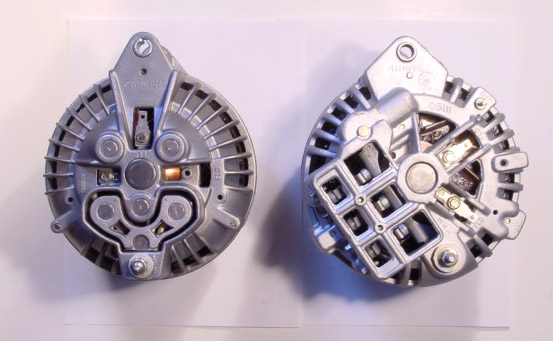Where did you find the 75 truck manual?
What does your "new" alternator look like? What you want is the later "squareback" and not the old style "roundback"
You want the type on the right which is better for low speed.
A "quick check" you can do is to disconnect the green field wire at the alternator and use a clip lead to ground that alternator terminal. See if the idle / slow speed voltage picks up. If so, you might have a voltage drop problem (poor connections) in the field circuit.
With this ground lead in place, turn off the engine, and turn the key to "run." Measure voltage at the remaining blue field wire at the alternator WITH the blue hooked up. It should be "close to" same as battery.

















